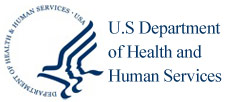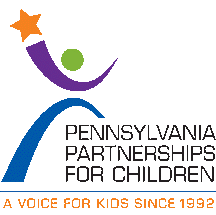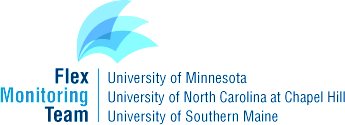- CMS: Medicare Program; Prospective Payment System and Consolidated Billing for Skilled Nursing Facilities; Updates to the Quality Reporting Program for Federal Fiscal Year 2026
- CMS: Medicare Program; FY 2026 Hospice Wage Index and Payment Rate Update and Hospice Quality Reporting Program Requirements
- Public Inspection: CMS: Medicare Program: Prospective Payment System and Consolidated Billing for Skilled Nursing Facilities; Updates to the Quality Reporting Program for Federal Fiscal Year 2026
- Public Inspection: CMS: Medicare Program: Fiscal Year 2026 Hospice Wage Index and Payment Rate Update and Hospice Quality Reporting Program Requirements
- CMS: Request for Information; Health Technology Ecosystem
- VA: Staff Sergeant Fox Suicide Prevention Grant Program Funding Opportunity
- State: 60-Day Notice of Proposed Information Collection: J-1 Visa Waiver Recommendation Application
- Public Inspection: CMS: Request for Information: Health Technology Ecosystem
- HHS: Request for Information (RFI): Ensuring Lawful Regulation and Unleashing Innovation To Make American Healthy Again
- VA: Solicitation of Nominations for the Appointment to the Advisory Committee on Tribal and Indian Affairs
- GAO Seeks New Members for Tribal and Indigenous Advisory Council
- VA: Staff Sergeant Fox Suicide Prevention Grant Program Funding Opportunity
- Telehealth Study Recruiting Veterans Now
- USDA Delivers Immediate Relief to Farmers, Ranchers and Rural Communities Impacted by Recent Disasters
- Submit Nominations for Partnership for Quality Measurement (PQM) Committees
Efforts to help Expand Nationwide Access and Coverage for High-quality Maternal Health Services
 As part of Vice President Kamala Harris’s Call to Action to Reduce Maternal Mortality and Morbidity, the U.S. Department of Health and Human Services (HHS), through the Centers for Medicare & Medicaid Services (CMS), is taking steps to improve maternal health and support the delivery of equitable, high-quality care for pregnancy and postpartum care. CMS intends to propose a “Birthing-Friendly” designation to drive improvements in perinatal health outcomes and maternal health equity. The designation would initially identify hospitals that provide perinatal care, are participating in a maternity care quality improvement collaborative, and have implemented recommended patient safety practices.
As part of Vice President Kamala Harris’s Call to Action to Reduce Maternal Mortality and Morbidity, the U.S. Department of Health and Human Services (HHS), through the Centers for Medicare & Medicaid Services (CMS), is taking steps to improve maternal health and support the delivery of equitable, high-quality care for pregnancy and postpartum care. CMS intends to propose a “Birthing-Friendly” designation to drive improvements in perinatal health outcomes and maternal health equity. The designation would initially identify hospitals that provide perinatal care, are participating in a maternity care quality improvement collaborative, and have implemented recommended patient safety practices.
In addition, CMS is encouraging states to take advantage of the American Rescue Plan’s (ARP’s) option to provide 12 months postpartum coverage to pregnant individuals who are enrolled in Medicaid or the Children’s Health Insurance Program (CHIP). This follows the release of a report by HHS’s Office of the Assistant Secretary for Planning and Evaluation (ASPE) showing the dramatic impact if states extended Medicaid postpartum coverage to 12 months. If every state adopted an extension — as proposed in the Build Back Better Act — then the number of Americans getting coverage for a full year postpartum would roughly double, extending coverage for an estimated 720,000 in a given year.
Medicaid and CHIP cover over 42 percent of births in the nation: https://www.medicaid.gov/medicaid/quality-of-care/downloads/mih-beneficiary-profile.pdf nearly half of which are to Black, Hispanic, or American Indian/Alaskan Native individuals. Extending the postpartum coverage period can improve health outcomes during the postpartum period and mitigate health disparities for individuals served by Medicaid and CHIP. Continue reading “Efforts to help Expand Nationwide Access and Coverage for High-quality Maternal Health Services”
Annual State of Child Welfare in Pennsylvania

Pennsylvania Partnerships for Children (PPFC) released their 12th annual State of Child Welfare report https://www.papartnerships.org/report/report-2021-state-of-child-welfare-navigating-the-uncertainty-of-the-pandemic-to-strengthen-the-system/?eType=EmailBlastContent&eId=31ba293f-8d07-4541-a0eb-67412a0bc948, which raises concerns about the need to strengthen the child welfare system as it uses data from 2020 – only the beginning of the COVID-19 pandemic – that shows decreases in child protective services reporting and the number of children placed in foster care statewide.
In 2020 there were 32,919 CPS reports, which was a 22% decline in reports from 2019, but the substantiation of reports was the highest in the last five years, with 14% of reports being investigated and found to be true. Notably, stay-at-home orders, moving to virtual learning, and less contact with medical professionals created a significant decrease in mandated reporting trends during the year for which the most recent data is available.
While substantiation rates did increase, data from 2021 will be significant to see how trends shift as schools resumed in-person instruction. There was subsequently more interaction between mandated reporters, such as teachers, with children and families. We anticipate the 2021 data will show an increase in referrals and a potential decrease in substantiation as the system struggles to respond to the needs of children experiencing abuse and neglect during an unprecedented time of crisis.
In 2020, 21,689 children were served in the Pennsylvania foster care system, a 12% decrease in the total population from the prior year.
With overall reductions in placement, one could assume this translates to better interventions on the front-end of an investigation and correspondingly stabilizes families. However, when we look at the totality of the data from the start of an investigation through placement, the overall reduction correlates to the challenges we know were present due to the pandemic. Again, fewer referrals being made by mandated reporters means fewer occasions to identify abuse leading to placement.
See the complete list of policy recommendations in the 2021 State of Child Welfare: Navigating the Uncertainty of the Pandemic to Strengthen the System: https://online.flippingbook.com/view/781504134/2-3/?eType=EmailBlastContent&eId=31ba293f-8d07-4541-a0eb-67412a0bc948
Efforts to Help Expand Nationwide Access and Coverage for High-quality Maternal Health Services

As part of Vice President Kamala Harris’s Call to Action to Reduce Maternal Mortality and Morbidity, the U.S. Department of Health and Human Services (HHS), through the Centers for Medicare & Medicaid Services (CMS), is taking steps to improve maternal health and support the delivery of equitable, high-quality care for pregnancy and postpartum care. Click the link to learn more: https://aspe.hhs.gov/reports/potential-state-level-effects-extending-postpartum-coverage
USDA Invests $1 Million in Climate-Smart and Resilient Infrastructure

On December 3, 2021, United States Department of Agriculture (USDA) Secretary Tom Vilsack announced the Department is investing $1 million to reduce the impacts of climate change on rural communities in Pennsylvania. As part of the Build Back Better agenda, the Biden-Harris Administration has made investing in rural communities, creating good-paying jobs and combatting the climate crisis top priorities.
“Rural America is on the front lines of climate change, and our communities deserve investments that will strengthen all of our resilience,” Vilsack said. “President Biden has created a roadmap for how we can tackle the climate crisis and expand access to renewable energy infrastructure, all while creating good-paying jobs and saving people money on their energy costs. With the Build Back Better agenda, USDA will be able to fund more and more critical projects like those announced today in the coming months and years.”
The announcement was made at Saubel’s Market in York County, Pa. The local grocery store was one of 22 projects receiving Rural Energy for America Program (REAP) https://www.rd.usda.gov/programs-services/rural-energy-america-program-renewable-energy-systems-energy-efficiency/pa or Community Facilities Disaster Grants https://www.rd.usda.gov/programs-services/community-facilities/community-facilities-direct-loan-grant-programin Pennsylvania.
Saubel’s Market will receive a $102,413 USDA REAP grant. With this funding, the small business will install solar panels on the roof of their family-owned grocery store that has been in business since the 1960s. This project is expected to save $30,852 per year and will replace 395,539 kilowatt hours (kWh) per year, which is enough energy to power 36 homes annually.
Critical Access Hospitals’ Initial Response to COVID-19

The Flex Monitoring Team (FMT) has released a new data report, Critical Access Hospitals’ Initial Response to COVID-19 by System Affiliation. This report presents data on the initial response to COVID-19 in system-affiliated and independent Critical Access Hospitals (CAHs). The data come from a survey of CAH CEOs in eight states about their response to COVID-19 from February to August 2020, and findings include information on COVID-19 case volume, personal protective equipment (PPE) supply, and the perceived impact of being a system-affiliated or independent CAH on their overall response to COVID-19.

The Health Resources and Services Administration (HRSA) released this new Notice of Funding Opportunity (NOFO) announcement to increase the number of qualified nursing faculty nationwide. The completion of up to four years of post-graduation full-time nurse faculty employment in an accredited school of nursing, the program authorizes cancellation of up to 85 percent of the original student Nurse Faculty Loan Program (NFLP) provides funding to accredited schools of nursing to establish and operate a student loan fund and provide loans to students enrolled in advanced education nursing degree programs who are committed to becoming nurse faculty. In exchange for loan amount (plus interest thereon).
Through these efforts, the NFLP will build upon HRSA’s existing health workforce development investments, increasing access to a skilled health workforce.
HRSA anticipates to award up to 80 grantees with a total of approximately $26.5 million to support training of advanced education nursing students who will serve as nurse faculty upon graduation, with a focus on doctorate preparation.
Visit Grants.gov to apply.
Nurse Faculty Loan Program Funding Opportunity
Nurse Faculty Loan Program (NFLP)
Funding Opportunity Number: HRSA-22-047
The application deadline is January 13, 2022
The Health Resources and Services Administration (HRSA) released this new Notice of Funding Opportunity (NOFO) announcement to increase the number of qualified nursing faculty nationwide. The completion of up to four years of post-graduation full-time nurse faculty employment in an accredited school of nursing, the program authorizes cancellation of up to 85 percent of the original student Nurse Faculty Loan Program (NFLP) provides funding to accredited schools of nursing to establish and operate a student loan fund and provide loans to students enrolled in advanced education nursing degree programs who are committed to becoming nurse faculty. In exchange for loan amount (plus interest thereon).
Through these efforts, the NFLP will build upon HRSA’s existing health workforce development investments, increasing access to a skilled health workforce.
HRSA anticipates to award up to 80 grantees with a total of approximately $26.5 million to support training of advanced education nursing students who will serve as nurse faculty upon graduation, with a focus on doctorate preparation.
Visit Grants.gov to apply.
Rural Health Value

The Rural Health Value team has released a revised Value-Based Care Strategic Planning Tool (VBC Tool). The web-based tool is designed for rural health care leaders to assess organizational capacities or capabilities (e.g., resources, processes, infrastructure) to deliver value-based care as part of their strategic planning process. Upon completion of the on-line tool, a report is provided that can be used to support strategic planning and prioritize action plans that are responsive to a changing health care payment and delivery environment. Supplemental resources, including an action planning tool and a brief guide to assist leaders in preparing their organization for value-based care are also available.
Value-Based Care Assessment Tool (updated December 2021)
This online tool helps the organization assess readiness for the shift of healthcare payments from volume to value. The resulting report may be used to guide the development of action plans. Supplemental resources, including an action planning tool and a brief guide to assist leaders in preparing their organization for value-based care are also available.
Link: Value-Based Care Assessment Tool | RuralHealthValue.org (uiowa.edu)
Dental Assistant Workforce Needs Assessment
The National Network for Oral Health Access (NNOHA) is conducting a needs assessment to better understand the current state and needs of community health centers’ dental assistant workforce. The results of this needs assessment will inform the development of national resources to assist with the recruitment, retention and training of dental assistants. The needs assessment will take five minutes to complete and is intended for dental leadership and dental assistants working in community health centers. By completing the needs assessment, you will be eligible to enter a drawing for a $50 Amazon gift card. The needs assessment will close on January 31, 2022. Click here to complete.
Study Finds Lack of High School Education Predicts Hesitancy
A lack of a high school education was the most important predictor of COVID-19 vaccine hesitancy in 3,142 U.S. counties, finds a study yesterday in the American Journal of Infection Control. Of all reasons cited for COVID-19 vaccine hesitancy, a lack of trust in the vaccines (55%) was the most common, followed by worries about side effects (48%) and low trust in the government (46%). Five of the 10 most common reasons given for vaccine hesitancy were related to a lack of knowledge about potential side effects, benefits, effectiveness and risks of being unvaccinated.
